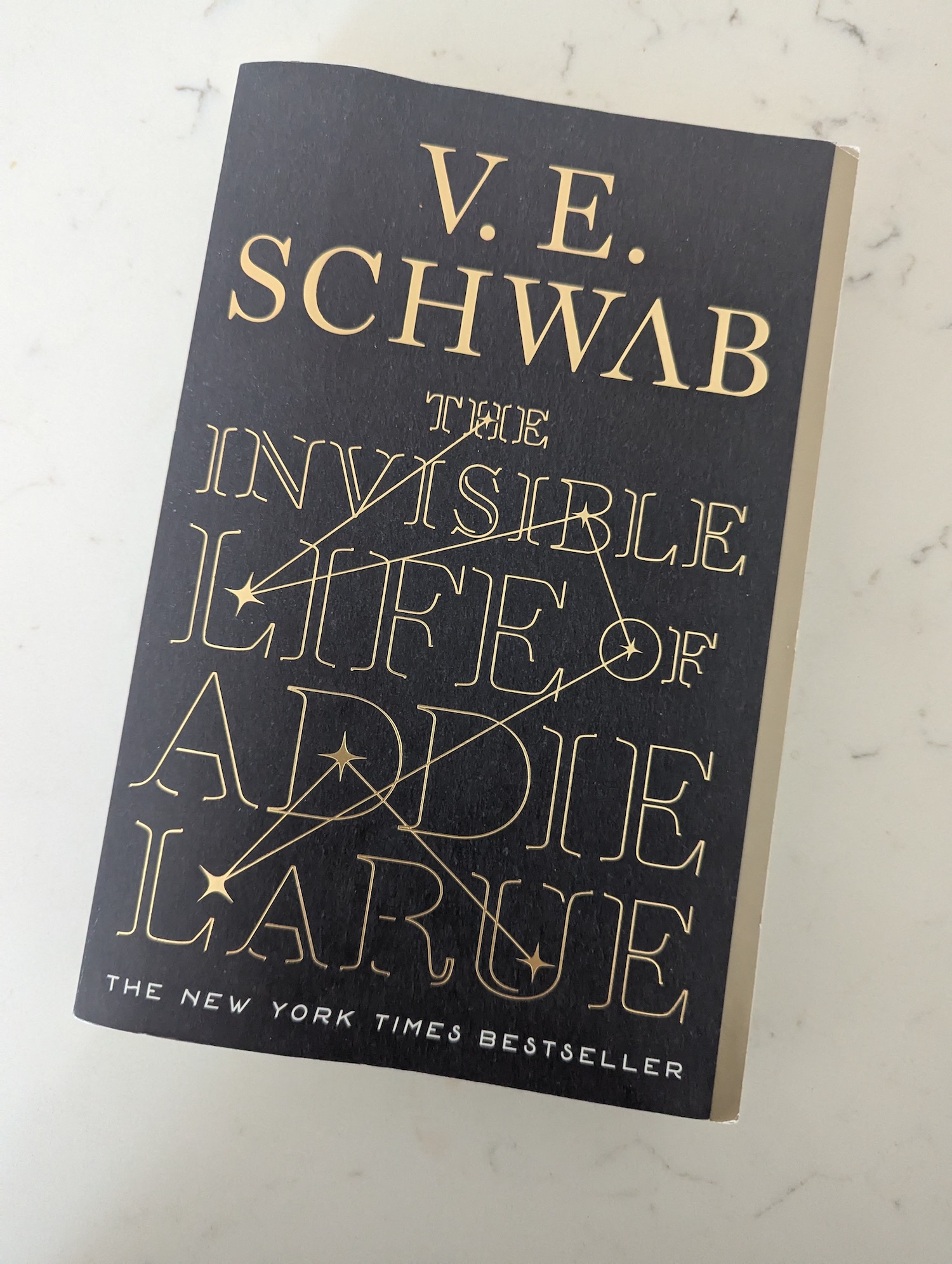I generally avoid buying books labeled as New York Times Bestsellers because, in my experience, many of the novels chosen by such establishments tend to be underwhelming. The books I’ve purchased in the past from the New York Times list often lean toward literary works—beautifully written, yet lacking in actual plot progression. So, when I received The Invisible Life of Addie LaRue as a gift, I approached it with trepidation.
However, after just one chapter, I was completely won over. The writing is simple yet vividly paints the surroundings and characters, seamlessly transporting the reader from New York in 2014 to Villion-Sur-Sarthe, France, in 1698. I found myself unable to put the book down, becoming increasingly intrigued by the girl no one would ever remember.
The story follows Addie LaRue, a young woman cursed to live for eternity—but with one major drawback: anyone she meets instantly forgets her. In 1698, desperate to escape an unwanted marriage at 21, she makes a deal with a dark god named Luc. She offers her soul once she has lived a full and satisfying life. The devil, of course, is in the details. Luc grants her immortality, ensuring she will never perish from cold, hunger, or even pain. However, she is also stripped of all connections—her own family does not recognize her, and her entire life is wiped clean. Forced to start over, Addie flees to Paris, where she spends years learning the brutal intricacies of her curse. She cannot rent a room because landlords forget she exists. She cannot fall in love because no one remembers meeting her. Forced to steal to survive and even sell her own body Addie becomes resolute in only one thing, not to give up. She will not release her soul to Luc and is able to find the beauty of life.
The story shifts effortlessly between past and present, where Addie still wanders the streets of New York, a ghost of a person no one can hold onto—until one fateful day, when she meets Henry, an unassuming bookseller who, for the first time in 300 years, remembers her.
There are many compelling layers to this book, but what I loved most were the philosophical questions it raised: What is a life without connections? Is there truly such a thing as too much time? How do we leave our mark on the world?
I was particularly drawn to the dynamic between Addie and Luc, which unfolds over centuries. Addie remains defiant, refusing to give up her soul because she believes she has not yet fulfilled her terms. Meanwhile, Luc becomes increasingly obsessed with her, his possessive nature making him a nuanced villain rather than a one-dimensional antagonist.
Even Henry’s character resonated deeply with me. There were moments in his story that paralleled my own experiences, making him feel especially human. The desire for more time, the fear of wasting it, and the aimlessness of watching the years slip by—these are emotions I think many of us grapple with. One particular passage stood out to me, especially as someone who often turns to travel as an escape:
“Blink, and you’re twenty-four. You travel through Europe, thinking—hoping—that the change will spark something in you, that a glimpse of the greater, grander world will bring you focus. And for a little while, it does. But there’s no job, no future, no interlude, and when it’s over, your bank account is dry, and you’re no closer to anything.”
As the story neared its conclusion, I found myself emotionally drained yet completely satisfied with how it ended. V.E. Schwab doesn’t tie up Addie’s fate with a neat bow. Instead, she leaves us with Addie’s unwavering resolve—a glimmer of hope that, despite everything, she has left an imprint on the world. And with enough determination, she can do anything.


Be First to Comment